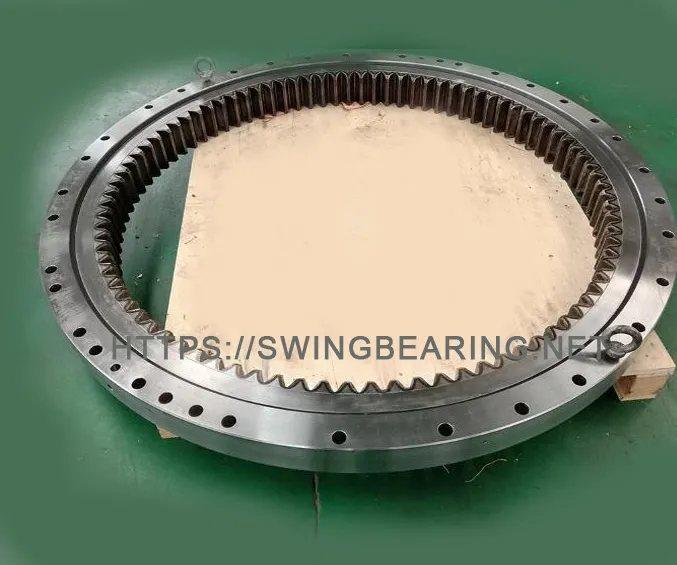
Pasukamojo stalo guoliai are essential components in various industrial applications, especially in construction equipment. These bearings are known for their ability to handle large axial loads, radial loads, and overturning moments, making them indispensable for heavy machinery. Ensuring their stability and performance is critical for efficient operation. This blog will delve into the factors affecting the stability of turntable bearings, their design considerations, and best practices for maintaining their performance.
Turntable bearings are designed to perform with high precision and stability, which are crucial for their application in construction and industrial machinery. Users often focus on the stability and reliability of these bearings to ensure smooth and efficient operations. The unique design of turntable bearings, including their ability to handle comprehensive loads, makes them suitable for demanding applications.

The design of turntable bearings typically involves rolling elements separated by isolating blocks. This structure ensures smooth movement and is widely used across various applications. For special applications, such as horizontal shafts, continuously rotating generators, or high-precision positioning requirements, special ball or roller isolating blocks are used. In such cases, strip-shaped composite support structures ensure the rolling elements maintain the correct circular position, enhancing stability and reliability.
The support structure plays a crucial role in the stability of turntable bearings. Different types of support structures are used to enhance performance and longevity, including:
These structures are designed to ensure the uniform distribution of forces and maintain the stability of the bearing under various operational conditions.

When selecting and designing precision turntable bearings, two core indicators are stability and reliability. Key considerations in the process design include:
In construction equipment, the rationality of structural configuration is paramount. Often, gear teeth are machined on the inner or outer ring of the bearing to simplify the driving system. This design choice must be made carefully, with input from gear industry experts to avoid potential issues.
Despite careful design and installation, stability issues can arise during the use of turntable bearings. Common problems include:

Turntable bearings are vital components in industrial and construction machinery, requiring careful design and maintenance to ensure stability and performance. By understanding the factors affecting their stability and implementing best practices in design, installation, and maintenance, users can ensure the efficient operation of their equipment. Regular monitoring and timely interventions can prevent issues and prolong the lifespan of turntable bearings.
Q1: Why is stability important for turntable bearings in industrial applications?
A1: Stability ensures smooth and efficient operation, allowing the bearing to handle large axial loads, radial loads, and overturning moments without failure.
Q2: How do isolating blocks in rolling elements contribute to bearing stability?
A2: Isolating blocks maintain smooth movement by keeping the rolling elements properly positioned, which is crucial for applications requiring high precision and reliability.
Q3: What types of support structures are used in swing bearings?
A3: Various support structures, including overall, segmented, copper, steel, polyurethane, nylon, PTFE, and composite material structures, are used to enhance bearing performance and stability.
Q4: What process design considerations are critical for swing bearings?
A4: Key considerations include structure and material selection, hardness levels, height of rolling elements and collar, wall thickness ratio, machining accuracy, support structure design, lubrication and sealing systems, and proper installation and maintenance.
Q5: What are common stability issues in turntable bearings, and how can they be addressed?
A5: Common issues include loose installation bolts, insufficient rigidity of supporting structures, and elastic deformation during loading. Regular maintenance, proper installation, and ensuring rigid supporting structures can mitigate these problems.